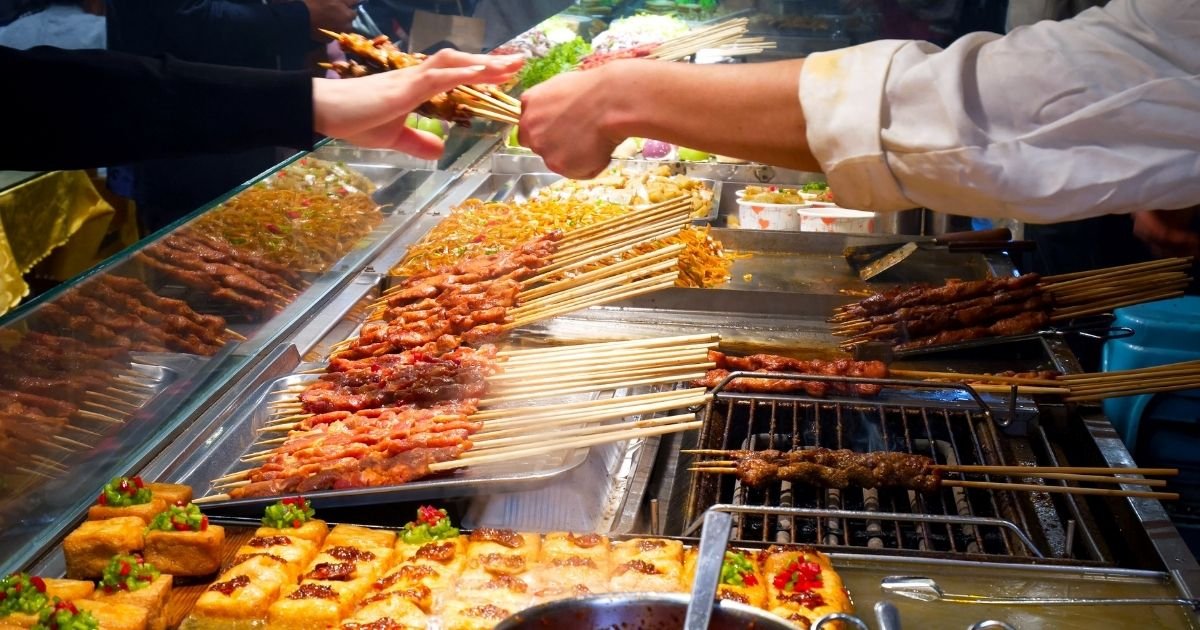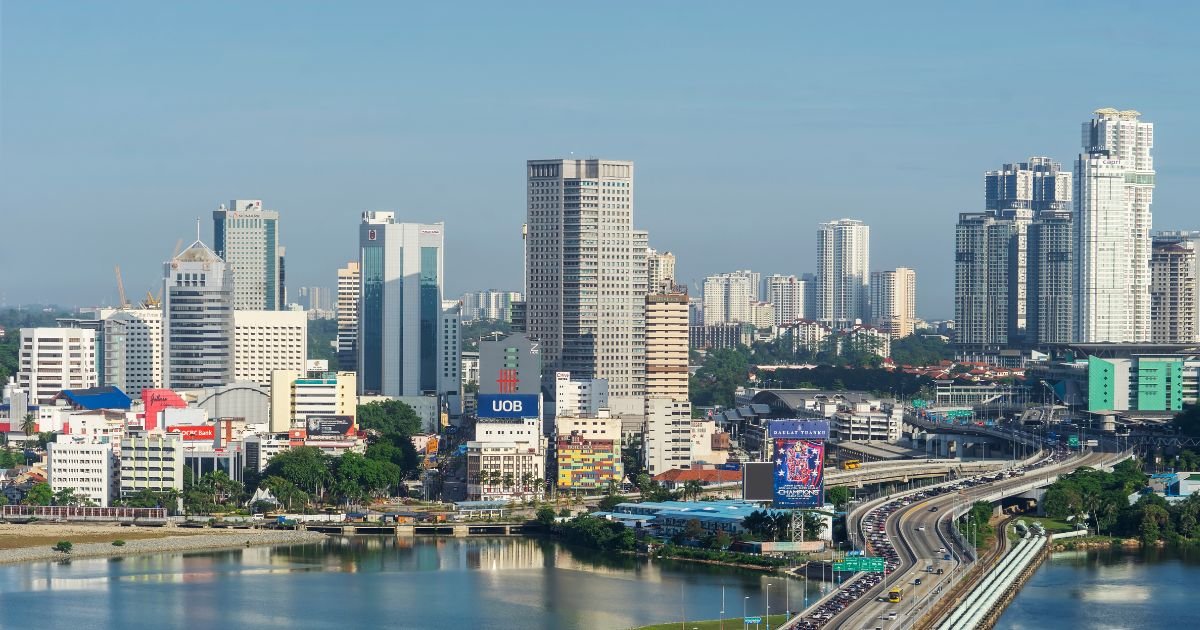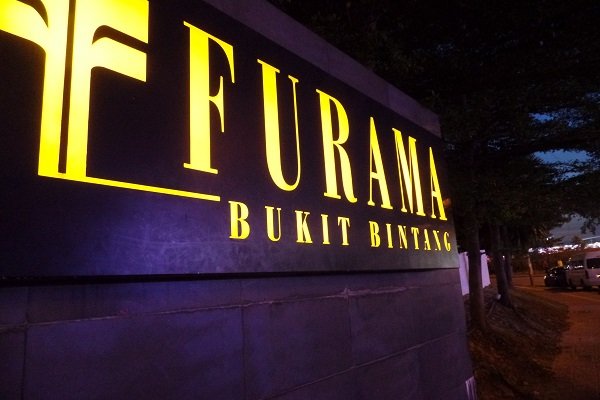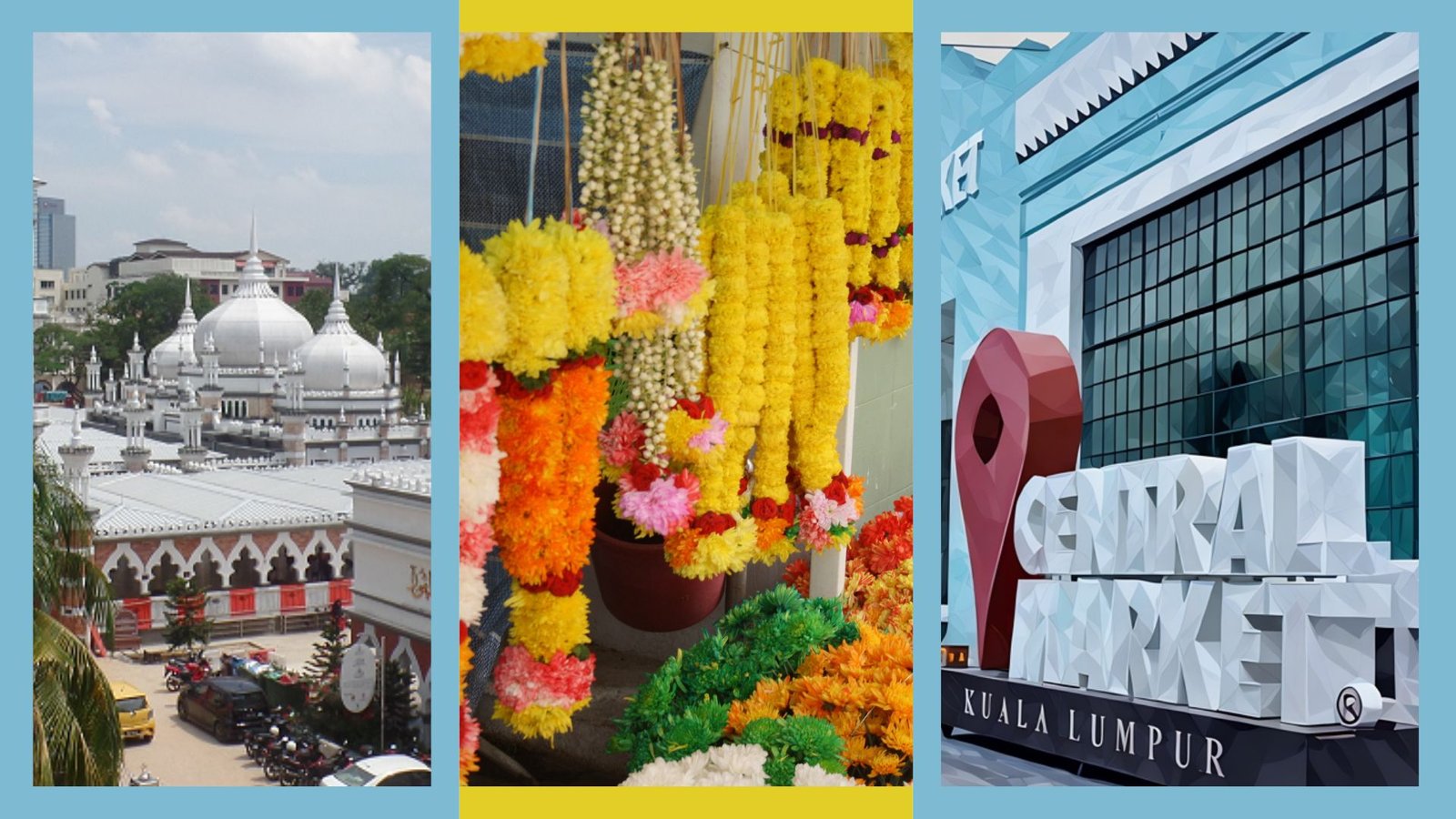
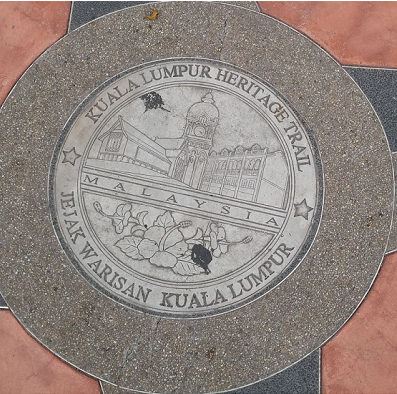
The Heritage Trail in Kuala Lumpur
The Heritage in Kuala Lumpur explore some of the earliest buildings constructed in the old part of the town marking the historical and cultural evolution of the city. For history and culture lovers, the “Heritage Trail” offers a glimpse into the rich cultural history of Kuala Lumpur and sheds lights on the early settlers from various ethnic backgrounds who helped share the modern Malaysia. Each stop along the way tells a story about the transformation of Kuala Lumpur City from a tin mining town to the modern metropolis while preserving its rich cultural roots.
A Guide to Heritage Trail in Kuala Lumpur Malaysia

1. Merdeka Square (Dataran Merdeka)
Start your exploration of the heritage trail at this iconic square, which is the historical heart of Kuala Lumpur. It was here that Malaysia’s independence from British colonial rule was declared in 1957. The open space is surrounded by the Abdus Samad Building on one side and an old St. Mary’s Cathedral. built in the 1890s. It is a landmark built in the English Gothic Style and is claimed to be the oldest Anglican church in Malaysia.

2. Sultan Abdul Samad Building
This majestic building is one of Kuala Lumpur’s most recognisable landmarks. The architecture blends Moorish, Indian, and Western influences. Built in 1897, it showcases stunning Moorish-style architecture with copper domes, arches, and a clock tower that once housed British colonial offices. Today, it stands proudly as a symbol of Malaysia’s rich history and independence, beautifully illuminated at night against the backdrop of Merdeka Square.

3. Jamek Mosque (Masjid Jamek)
Masjid Jamek, one of Kuala Lumpur’s oldest and most beautiful mosques, sits at the confluence of the Klang and Gombak Rivers — the very spot where the city was founded. Built in 1909 and designed by British architect A.B. Hubback, the mosque showcases stunning Mughal and Moorish architectural styles, with graceful domes, arched colonnades, and slender minarets. Once the main mosque of Kuala Lumpur before Masjid Negara was built, Masjid Jamek remains a peaceful oasis amid the busy city. Surrounded by palm trees and river views, it stands as a symbol of Kuala Lumpur’s rich history and Islamic heritage.

4. The Royal Selangor Club
The Royal Selangor Club, founded in 1884, is one of Kuala Lumpur’s most historic social institutions. Located beside Dataran Merdeka (Merdeka Square), the club was once an exclusive gathering place for British colonial officials and the city’s elite. Its distinctive Tudor-style architecture, with black-and-white timber beams and gabled roofs, adds a charming colonial touch to the cityscape. Over the years, it has remained a hub for sports, social events, and community gatherings. Overlooking the very field where Malaysia’s independence was declared in 1957, the Royal Selangor Club stands as a proud reminder of Kuala Lumpur’s colonial past and its journey toward nationhood.

5. Central Market (Pasar Seni):
Central Market Kuala Lumpur, locally known as Pasar Seni, is one of the city’s most beloved cultural landmarks. Originally built in 1888 as a wet market, it has been transformed into a vibrant centre for arts, crafts, and Malaysian heritage. The building’s distinctive Art Deco façade, added in the 1930s, gives it a timeless charm. Inside, visitors can explore a colourful mix of stalls and boutiques selling traditional batik, handmade souvenirs, local artwork, and cultural trinkets. The market also features the Kasturi Walk — an open-air street lined with food stalls and live performances. Central Market is not just a shopping destination but a celebration of Malaysia’s diverse cultures, making it a must-visit spot for both tourists and locals alike. Read More

6.Petaling Street KL
Jalan Petaling, better known as Petaling Street, is the vibrant heart of Kuala Lumpur’s Chinatown. Famous for its bustling market, it’s a lively spot filled with stalls selling everything from souvenirs and street food to clothes and accessories. By day, it’s a maze of shops and local eateries, but by night, the street comes alive with colourful lights and the aroma of local delights like roasted duck, char kuey teow, and ais kacang. Blending heritage, culture, and bargain shopping, Jalan Petaling is a must-visit for anyone wanting to experience the energetic charm of old Kuala Lumpur. Read More

7. Sri Mahamariamman Temple
The Sri Mahamariamman Temple in Chinatown, Kuala Lumpur, is the oldest Hindu temple in the city, dating back to 1873. 🌺 Its striking gopuram (tower) is adorned with colourful statues of Hindu deities, making it a vibrant sight amidst the bustling streets of Petaling. The temple remains an important place of worship for the Tamil community and a must-visit for anyone exploring KL’s cultural diversity.

8. National Mosque of Malaysia (Masjid Negara)
The National Mosque of Malaysia, or Masjid Negara, stands as a grand symbol of the country’s Islamic heritage and unity. Located in the heart of Kuala Lumpur near the KTM Building, it was completed in 1965 as a tribute to Malaysia’s independence. The mosque’s design blends modern and traditional Islamic elements, featuring a striking 73-metre-high minaret and a unique 16-pointed star-shaped roof that resembles an open umbrella — a symbol of protection. Surrounded by serene gardens and reflective pools, Masjid Negara can accommodate over 15,000 worshippers at a time. Its peaceful atmosphere and elegant architecture make it not only a place of worship but also one of Kuala Lumpur’s most iconic landmarks.

9. KTM Building
The KTM Building in Kuala Lumpur, located along Jalan Sultan Hishamuddin, is one of the city’s most beautiful colonial landmarks. Completed in 1917, it was designed by British architect A.B. Hubback, who also created the nearby Old Kuala Lumpur Railway Station. Built in the striking Indo-Saracenic style, the building features grand domes, horseshoe arches, and intricate colonnades that blend Islamic and Western architectural influences. Originally serving as the headquarters of the Federated Malay States Railways, it now houses Keretapi Tanah Melayu Berhad (KTMB). Despite surviving bombings during World War II and a major fire in 1968, the KTM Building remains an enduring symbol of Malaysia’s railway heritage and colonial-era grandeur.
Photogallery of Heritage Trail
Frequently Asked Questions
Catch a light rail to Masjid Jamek Stop from Kl Sentral or any station in Bukit Bintang. There is a central bus terminal in front of the
Explore the places of interest at your own pace. Start early in the day and you can visit most of the places within three hours, exploring at an easy pace. Merdeka Square is connected with Masjid Jamek by a main road with a sidewalk that takes around 15 minutes to reach the other side. The KTM building and the Museum of Islamic Art are located in the same area.
Chinatown is home to many nice cafes and restaurants. You can find a mix of traditional Asian food as well as modern cafes and coffee shops. The food court in the Central Market is a great place to enjoy lunch. A popular Nyonya restaurant, “Precious Old China”, is also located next to the food court.
Masjid Jamek and Central Market are popular places to stay if you want to explore the old part of the city and stay close to all the major attractions, as well as public transport. I have stayed at Travelodge Chinatown and Avenue J Hotel. Both of these hotels are centrally located in the area. Read more

